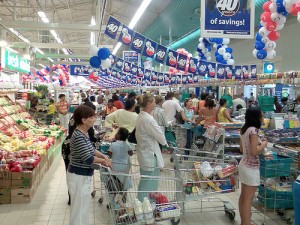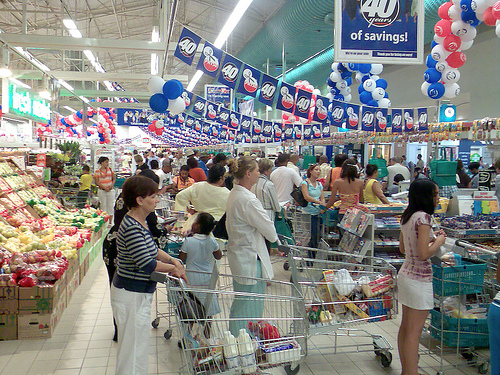In The Right Price for Good Food – Part 1, I proposed that the right price for good food depends on whom you’re asking, which may possibly explain why discussions around food prices are so lively. In The Right Price for Good Food – Part 2, I looked at the issue from the farmer’s perspective; today I examine it from the consumer’s perspective.
 In these days of rising food prices, rolling up to the check-out stand prompts a lot of us (including myself) to reflect on how to save more and spend less. I can readily sympathize with people wanting to get the best deals possible price-wise. But is a bargain always a bargain?
In these days of rising food prices, rolling up to the check-out stand prompts a lot of us (including myself) to reflect on how to save more and spend less. I can readily sympathize with people wanting to get the best deals possible price-wise. But is a bargain always a bargain?
Standard economic theory tells us that there are forces – the laws of supply and demand – that work to establish price. But reality – as we know – is so much more complex. Why is it, for example, that the poor pay more for a much narrower, less-nutritious range of food choices than do people in wealthy neighborhoods?
There’s been a lot of talk about how local food is affordable only to the well-to-do. But as discussed in my previous posts in this series, pricing tends to reflect the interests of groups with economic power. These interests even influence how economists compare prices. The standard method is to rely on the fiction of the “market basket.”
A “market basket” is a selection of goods and services – food items in this case – that the typical consumer buys. Deciding what is in the market basket is in itself a political act. The basket is based on the choices available to people and not on what they would prefer to buy or can afford to buy. So does it make a lot of sense to compare a market basket containing grass-fed beef to one containing a pound of slaughter-house hamburger? Local would indeed be more expensive.
However, if we are comparing a diet of mainly fruit and vegetables to one featuring processed foods and large quantities of dairy and meat, then the local option (fresh fruits and vegetables) is more likely to be the affordable choice. Moreover, if we count the costs of poor health and impaired personal productivity in the price of a standard market basket of food, then the price of local food is equitable by comparison.
Pricing, in effect, has more to do with an economy and social structure driven by inequalities than it does with individual producers’ choices. Agri-business and the industrialized food economy help to perpetuate the inequalities, whereas the emerging local food economy represents a more distributed, and, therefore, more equitable, pattern of resource use.
A shift in public perception of the value of locally produced food is critical to the development of sustainable regional food systems. As businesses and their customers come to understand the social and environmental benefits of a local food economy, the perception that buying locally produced food costs more will change.
The bigger dilemma is that we pay more than we can afford, both socially and environmentally, for low prices at the check-out stand, especially as the high costs of commodity food fall disproportionately on the poor.
Photo credit: Steve Crane, used with permission under Creative Commons license.

